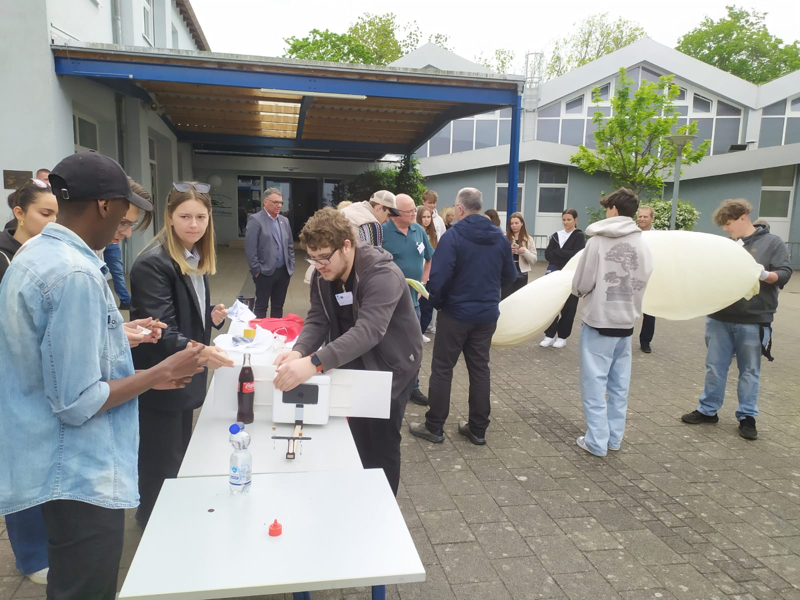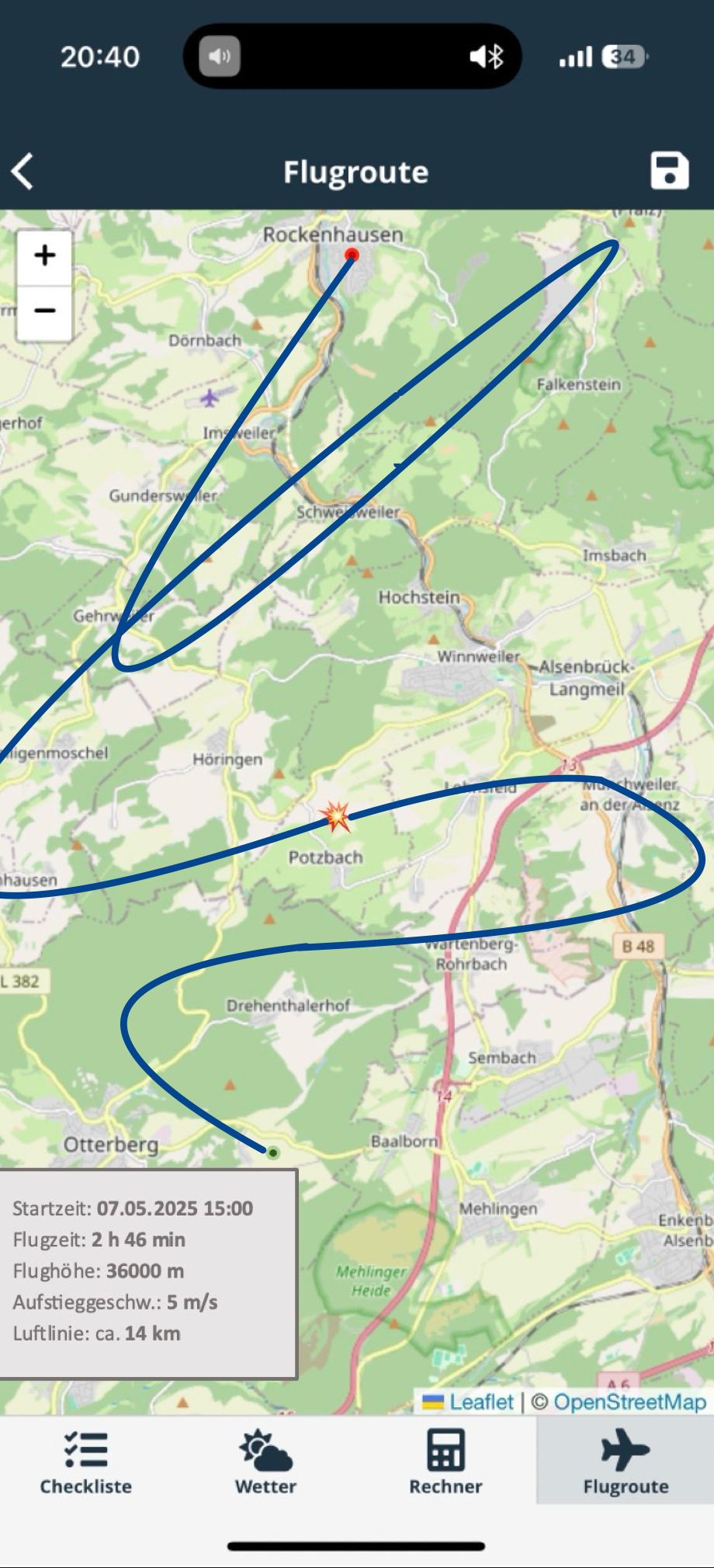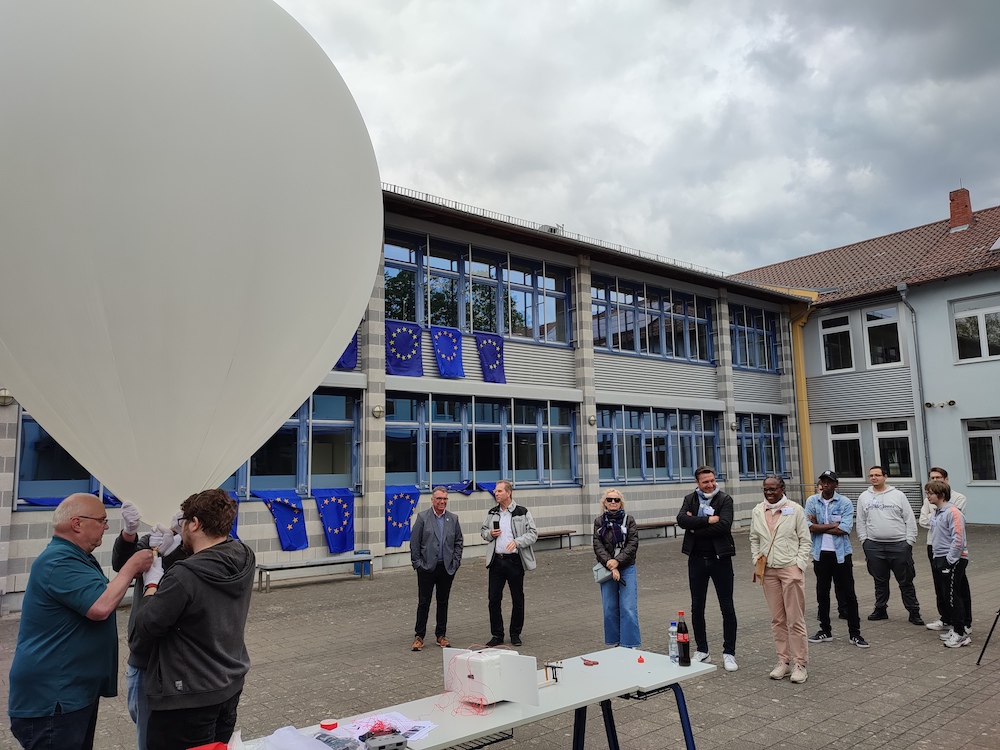Project meeting in Rockenhausen
10/05/25 19:26

On May 5-9, 2025, 19 students from partner schools implementing the Erasmus+ Ballon Measurement an Environmental Consciousness EU-Ballon project met in Rockenhausen, Germany, in the Palatinate region, to carry out a practical flight in a stratospheric balloon, which took prepared elements on board.
The German team of students, led by teacher Lutz Rothe, took care of the technical part of organizing the balloon flight (preparing the elements of the container, parachute, pumping gas, loading the measuring systems and experiment elements, preparing the recording with a 4K camera and connecting the system enabling tracking the balloon after returning to mobile phone range.
And so the French team prepared an experiment, the aim of which was to examine the behavior of various liquids and gases contained in test tubes in extreme stratospheric conditions (very low temperature -50 C, very low pressure 2.1 hPa), another French experiment was to examine the behavior of slime mold in these extreme conditions. Slime mold is often an indicator of environmental cleanliness. The French idea of measuring solar energy in the stratosphere using a solar panel was implemented by the Polish partner based on the method presented at the training in Kozienice in November 2024. Measuring systems containing a Raspberry Pi Pico2 microcontroller and appropriate sensors were prepared in Kozienice for the container that the balloon was to take with it. The values measured by the sensors were saved in the microcontroller's memory in the form of a simple database file that can be easily analyzed, for example using a spreadsheet or Python.
The Polish team prepared software to measure UV radiation, CO2, volatile organic compounds, acceleration, temperature, pressure, humidity and the voltage recorded on the solar panel.
The flight took place on May 7 at around 3 p.m., lasted 2 hours and 46 minutes, and was recorded with a 4K camera placed in the container.
The attached photos beautifully prove that the Earth is a sphere.
The movement of the balloon was tracked using a GPS system with a SIM card working in most European countries. Fortunately, the balloon's route was not long, despite the fact that the balloon certainly reached the stratosphere at an altitude of 36 km, which is confirmed by the recorded flight video and the extreme temperatures (-50 degrees Celsius), very low pressure (2.1 hPa), humidity 5% recorded by the measuring systems built. After the balloon burst, the container returned to Earth using a small parachute. After the GPS system transmitted information about the approximate landing site, a search group consisting of students and teachers set off. Despite concerns that the balloon would land in a river, in the forest, on rocks in the mountains or be damaged by power lines, it turned out that we were very lucky. The search did not last long and 25 km from the launch site, our equipment was found by a German farmer on his property. The equipment was handed over to us and did not appear to be damaged. After taking the balloon container back to the hotel, we opened it and to our surprise, the measuring instruments were still working, although they were very cold. We turned them off, and after about an hour we connected them to the computer, copied them and quickly noticed that there was no data and the entire flight was beautifully recorded. On May 8, the students presented an analysis of the recorded data and conclusions from the experiments conducted. We also discussed how the prepared software for the built systems works.
All participants of the project felt a bit like people preparing space flights and felt great satisfaction with the work done.
On May 6, the students had a very interesting lesson in the field on the recording of environmental parameters in the weather park in Offenbach am Main, which is home to the center for collecting and processing weather data from around the world, and the city of Offenbach is sometimes called the city of Meteo. On the way back to Rockenhausen, they also visited Mainz, the city of Gutenberg.
We invite you to read the article about our experiments in the regional German press:
https://www.rheinpfalz.de/lokal/donnersbergkreis_artikel,-auf-36-000-metern-höhe-pfälzer-schüler-forschen-mit-ballon-projekt-in-stratosphäre-_arid,5771626.html
Look to the photo gallery an gallery of results
We will also publish a film with fragments of the recorded flight soon.


